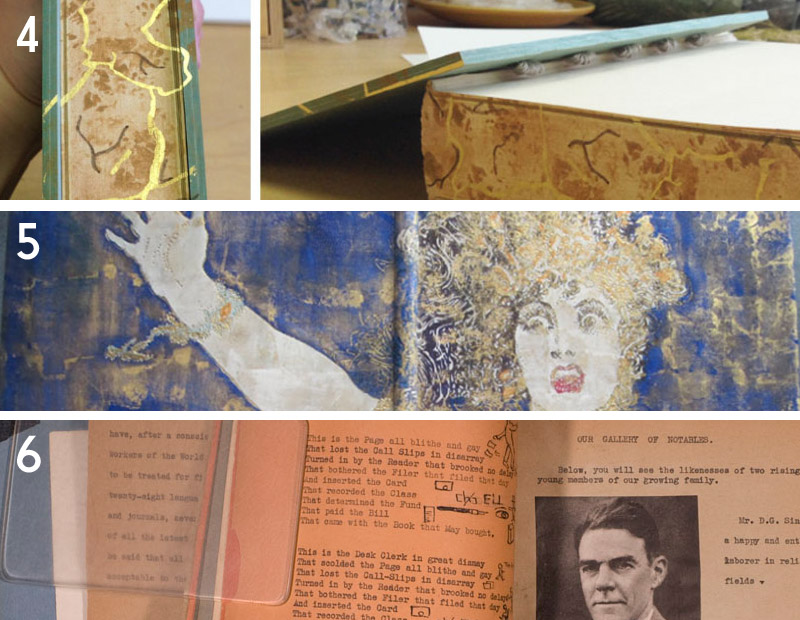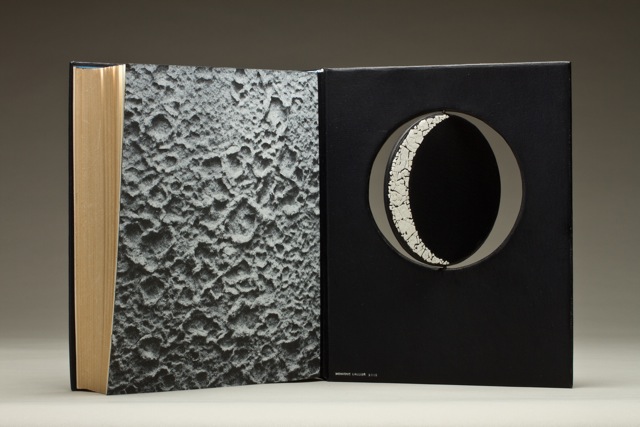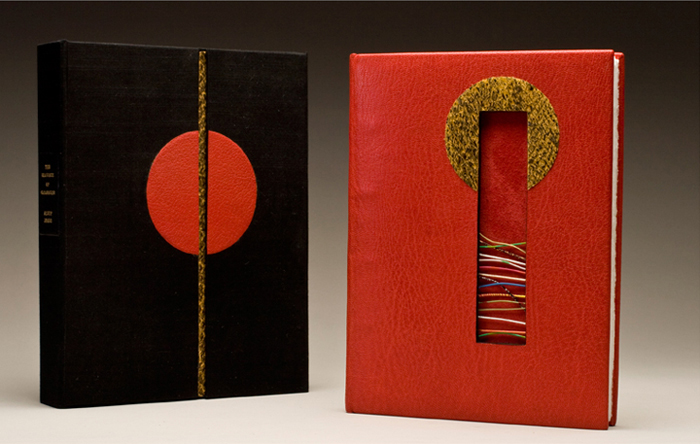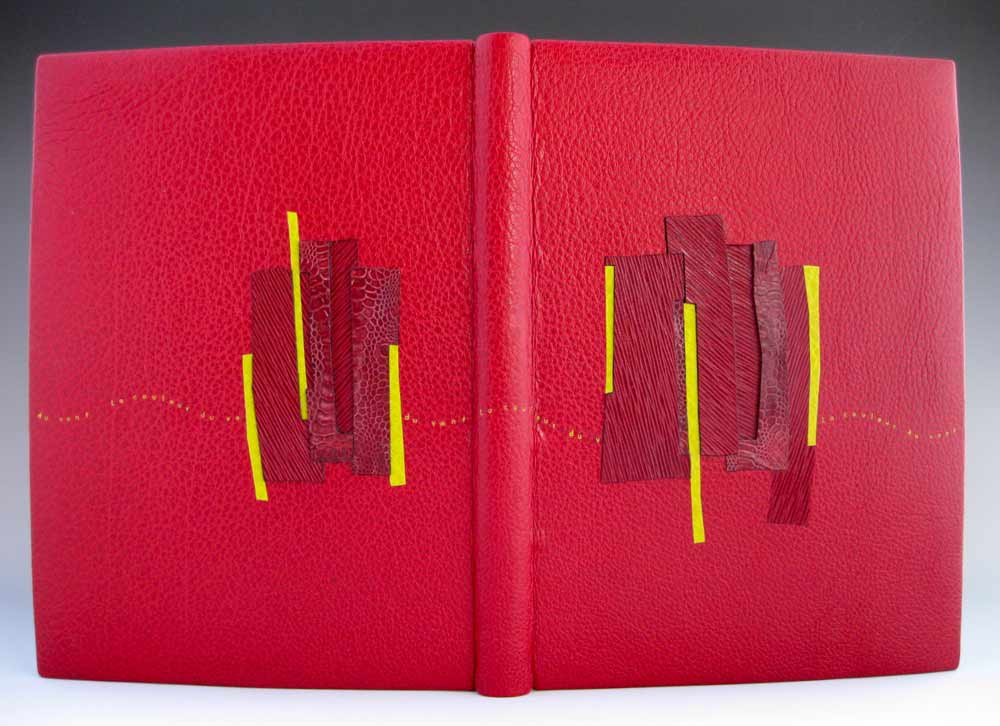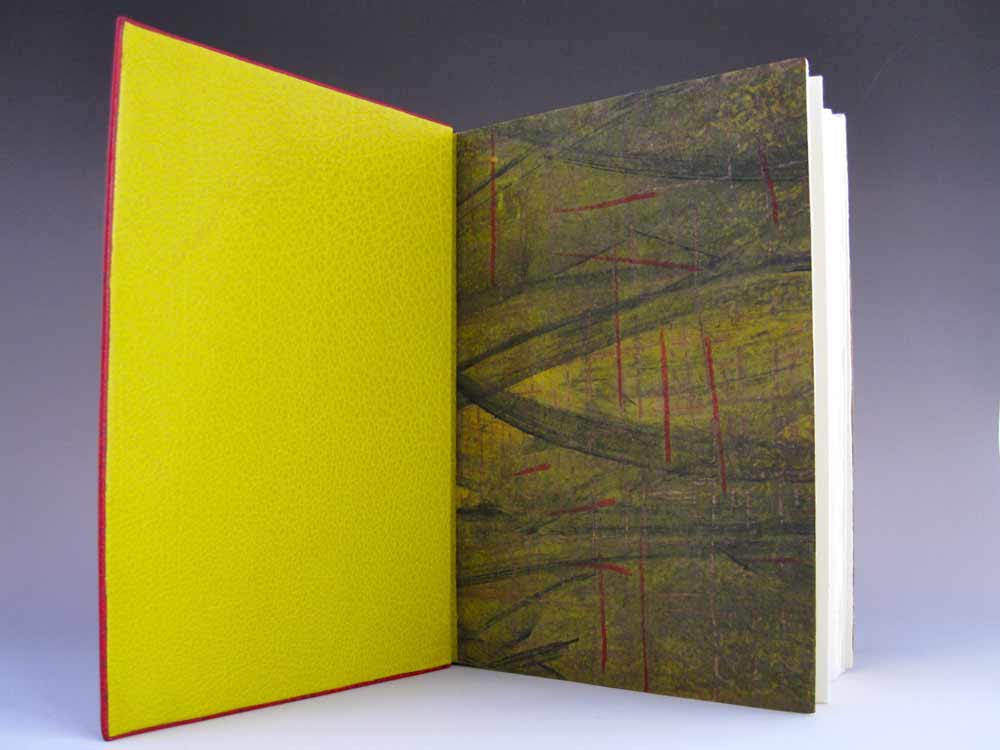As the year 2014 comes to a close, I want to send out another thank you to the nine bookbinders and book artists who took time away from their busy schedules to participate in my interviews. Another thank you goes to those who read and subscribe to my blog and I especially appreciate the kind comments I’ve received either in person or via email.
Now to reflect on my year: Herringbone Bindery was busy yet again this year. I had the opportunity to work on some really great projects, amongst them were commissions from the Old State House in Boston, artist Laura Davidson and the Veatchs booksellers. An unusual amount of traveling this year took me to Rare Book School for the first time, up to Maine for a mini-conference and across the country to Vegas for the Guild of Book Workers conference.
Things to expect in the New Year:
– an updated website with all the projects I completed in 2014 (including some beautiful design bindings)
– a Herringbone Bindery newsletter
– more posts on my own projects (expect to see more on Dune as I will be covering right after the holidays)
– another round of interviews
As we ring in the new year, I just wanted to share my favorites posts from 2014.
1. February // Bookbinder of the Month: Haein Song
Haein Song was recommend to me by Hannah Brown and I was so thankful for her suggestion. Haein’s work is so clean and skillfully crafted. Her headcaps are so impeccable that I gape in awe.
2. Artist: Marcela Cárdenas
3. May // Bookbinder of the Month: Monique Lallier
I greatly admire the work of Monique Lallier and was just ecstatic that she agreed to be interviewed for the blog. She has become such an influence in our field and openly shares her support and wisdom.
4. My Hand: A Desert Inspired Edge for Dune
5. August // Bookbinder of the Month: Mark Cockram
The interview with Mark Cockram captures the boisterous and enthusiastic charms of both his personality and love of the craft. Each post examines the intensity of his designs and complexity of his techniques.
6. Conservation Conversations Column
Beginning this year, I invited six of my colleagues working in conservation to post about a field that encapsulates their professional lives. Topics range from using the appropriate adhesive and what to consider when building a conservation lab to various conservation considerations and philosophies.
7. My Hand: Boxes for Laura Davidson
My first project with Laura Davidson after interviewing her on my blog.
8. Artist: Lydia Hardwick
9. Photographer: Andrea Galvani
10. January // Book Artist of the Month: Mary Uthuppuru
I’m so charmed both Mary Uthuppuru and her work. She really engages the craft by exploring and experimenting with bookbinding and printmaking techniques. Mary is quite inspiring.
11. November // Bookbinder of the Month: Sol Rébora
It was a pleasure to interview Sol Rébora. Her insights to bookbinding in Argentina were refreshing, as are her imaginative and unique design bindings.
12. February // Book Artist of the Month: Diane Jacobs
Diane Jacobs employs important topics like feminism, body issues and societal issues against women in book arts and other art forms. I am very engaged and compelled by these issues and enjoyed dissecting her work in the interview.
13. My Hand: Leather Embroidery Samplers
14. Artist: Jennifer Davis
Happy New Year!

